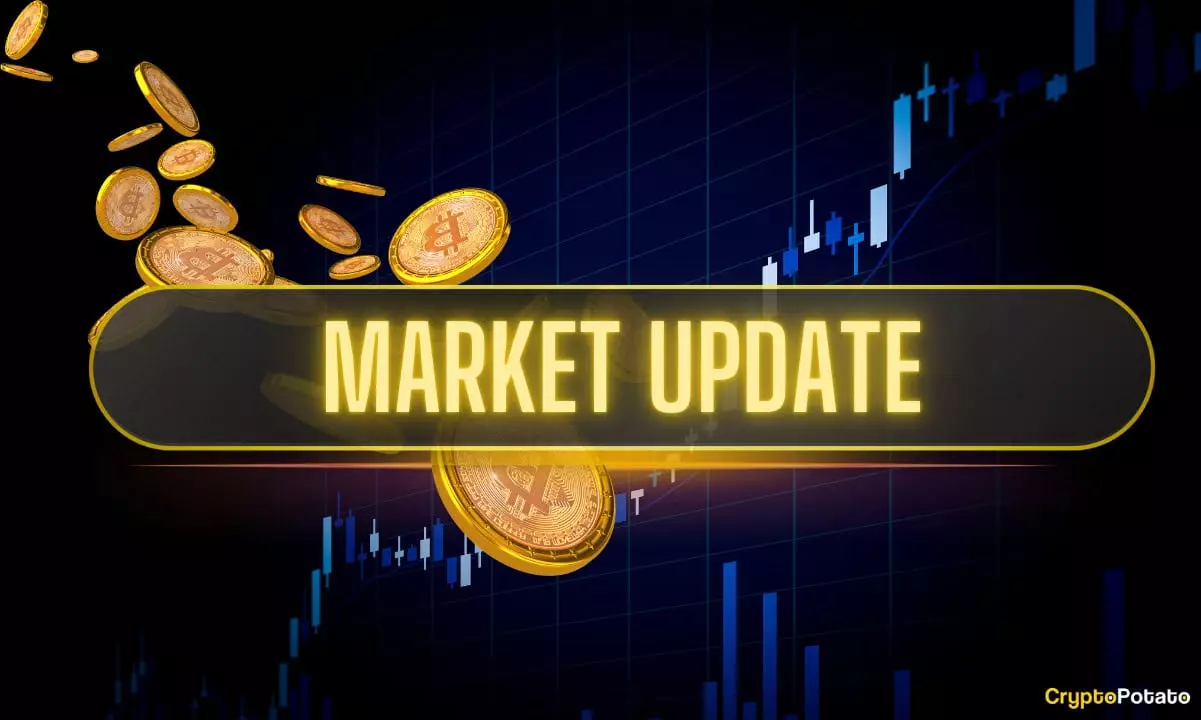In an environment that thrives on both volatility and speculation, Bitcoin’s recent surge to nearly $112,000 on May 22, termed “Pizza Day,” marked an exhilarating moment for crypto enthusiasts. Just a few months prior, Bitcoin appeared to struggle with its identity, dwindling amid global economic uncertainties. Yet, that high appeared almost ephemeral as it quickly succumbed to pressures that are all too familiar in the volatile cryptocurrency realm. It begs the question: are we witnessing a classic case of “what goes up must come down,” or are we on the precipice of something deeper?
Few could have anticipated that a slip in Bitcoin’s value would be predominantly triggered by non-crypto-related politics, specifically President Trump’s proposed tariffs against the European Union. Although the tariffs were temporarily suspended, the damage had been done. This incident highlighted how sensitive cryptocurrencies remain to external influences, not dissimilar to stocks or commodities. In a matter of days, Bitcoin’s price plummeted from its dizzying heights back below the psychological barrier of $110,000, even flirting with numbers less than $105,000. This storyline not only signals vulnerability but foreshadows a market forced into a state of perpetual instability.
The Crypto Community’s Speculative Mindset
Now, speculation looms large over the market regarding the recent downturn. Some members of the community suggest that Bitcoin’s drop may have been a tactic aimed at liquidating high-end traders—a perilous but not uncommon occurrence in trading environments marked by excessive leverage. This brings us to a crucial element that is often overlooked: the crypto trading community’s penchant for speculation can be a double-edged sword. While it generates high-risk opportunities for traders, it also cultivates an environment where price manipulation can thrive, leading to a loss of trust in cryptocurrencies as stable financial assets.
The decline of Bitcoin’s value has, however, been significantly lesser than that of alternative cryptocurrencies that are frequently perceived as less stable. Coins like DOGE, SOL, ADA, and others have faced even sharper declines, with DOGE losing a staggering 8% in the same timeframe. These drastic downturns suggest that while Bitcoin might be uncertain, it remains a “safe haven” for traders who prefer established options over riskier digital assets. Here we see Bitcoin’s advantage; it retains a level of dominance, approximately 60.9%, reminiscent of its stature in the market years ago.
Regulatory Shifts and Institutional Trust
Amid the uncertainty, the U.S. SEC’s decision to drop its lawsuit against Binance marks a notable shift in regulatory dynamics affecting the crypto landscape. This signifies a broader trend where regulatory bodies are beginning to acknowledge the complexities and implications of the crypto industry. The suspension sheds light on an attempt to provide a more conducive environment for entities willing to engage with cryptocurrencies. The implications of this could be far-reaching, as institutional players like BlackRock see substantial inflows into their Bitcoin ETFs. The confidence exuded by such giants may provide the much-needed stability in this perpetually shaky market, much like a lighthouse guiding ships away from rocky shores.
Equally, the intriguing headlines surrounding GameStop’s recent venture into Bitcoin acquisition—over $500 million worth—throw more fuel on the fire. GameStop, a name synonymous with market chaos and subreddit-driven volatility, venturing into Bitcoin conveys a clear signal: traditional investors are starting to recognize Bitcoin’s integral role in modern finance. Coinciding with JD Vance’s bold prediction at a major Bitcoin conference that 100 million people will own Bitcoin soon speaks volumes—not only about Bitcoin’s current traction but also the optimism for future mainstream adoption.
Celebrity Influence: A Double-Edged Sword
It’s vital to also consider the celebrity influence in the crypto space, as seen with Donald Trump Jr.’s announcement at the Vegas conference of a $2.5 billion “moonshot” for Bitcoin. While high-profile endorsements can draw attention and encourage more participation in the market, they bring with them a level of skepticism. Does celebrity support genuinely reflect the underlying value of Bitcoin, or are they merely riding the coattails of a trending asset class? The thin line between genuine investment and speculative hype is often camouflaged in a digital world that thrives on buzz.
Ultimately, Bitcoin’s current state underscores the inherent dichotomy of possibilities that lie ahead. While its price fluctuates in response to both market forces and external factors, the underlying strength of institutional investments and growing public interest cannot be ignored. These elements may well serve as cornerstones for a potentially transformative phase in the cryptocurrency landscape, inviting newfound interest and broader acceptance.
















Leave a Reply